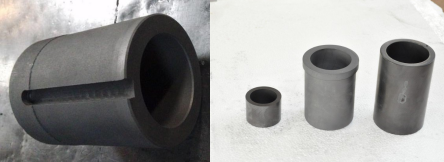Graphite has the advantages of electrical conductivity, heat resistance, good toughness, corrosion resistance, strong plasticity, and good lubrication performance. It can be widely used in metallurgy, machinery, electronics, chemical industry, medicine, military industry, national defense, aerospace and other industries. An indispensable non-metallic material is an indispensable strategic mineral resource for the national economy.
In the field of lithium batteries, graphite is the mainstream material for lithium ion battery anodes, accounting for most of the lithium battery anode market share. In practical applications, natural graphite is often accompanied by various impurities, which are difficult to use directly. In order to meet the requirements of industrial production, natural graphite must be purified, and the higher the purity of graphite, the higher its value.
Graphite purification methods mainly include flotation method, alkali melting acid leaching method, hydrofluoric acid method, chlorination roasting method and high temperature method.
1. Flotation method
Natural graphite has good floatability, and flotation is usually used as the first step when sorting and purifying natural graphite. At this stage, basically all natural graphite in industrial production is sorted by flotation, and the beneficiation technology adopts multi-stage grinding and multi-stage separation process. Reasonable equipment and processes to maximize the fixed carbon content and protect the graphite flake structure.
As the first step of graphite purification, flotation method has the advantages of mature technological process, simple equipment, low energy consumption and low production cost, which make it have obvious cost advantages. Part of the inclusions impregnated in the graphite flakes are removed, and the fixed carbon content of the purified graphite is difficult to exceed 95%. Therefore, in order to obtain high-purity graphite, other methods must be taken to further purify the graphite.
2. Alkali melting and acid leaching
The alkali-melting acid leaching method is to use the impurities in graphite to react with NaOH at a high temperature above 500 ℃, and some impurities form water-soluble reaction products, which are washed and removed by water leaching; The precipitate is neutralized with hydrochloric acid to form a water-soluble chloride, which is removed by washing with clean water.
3. Hydrofluoric acid method
The hydrofluoric acid method is to use the impurities in graphite to react with hydrofluoric acid, and some of the impurities form water-soluble compounds, which are discharged with the solution; the other part of the impurities reacts with HF to form water-insoluble compounds, which are formed by adding H2SiF6. Fluorosilicate in water, wash with clean water, separate the impurity solution from the graphite solid-liquid, so as to purify the graphite
The chlorination roasting method is to add a certain amount of reducing agent (such as coke) to the graphite, and at a certain temperature (above 1000 ℃) and a specific atmosphere, chlorine gas is introduced for chlorination roasting, so that the valuable metal impurities in the graphite are converted into The chloride or complex with a lower melting point escapes, so as to achieve the purpose of purifying graphite
5. High temperature method
The basic principle of the high temperature method is that the melting and boiling point of graphite is much higher than the melting and boiling point of the impurities contained in it, and the graphite and impurities are separated under high temperature conditions to purify the graphite, and finally high-purity graphite with a carbon content of more than 99.99% can be obtained. According to different heating sources, high temperature methods can be divided into resistance heating purification, induction heating purification, plasma heating purification, radio frequency heating purification, light energy heating purification and microwave heating purification. Compared with other purification methods, high-temperature purification of graphite can obtain high-purity graphite with carbon content higher than 99.99%, or even more than 99.995%, but at the same time, this method has higher requirements on raw material purity, material fineness and equipment process. The energy consumption is high and the investment required is huge.
In a word, flotation method, alkali-melting acid leaching method, hydrofluoric acid method, chlorination roasting method and high temperature method can effectively improve the purity of graphite, but these methods still have some problems, such as high equipment requirements, high operating temperature, energy consumption Large, large consumption of reagents, large discharge of waste water and exhaust gas, etc. The development of a high-purity graphite purification process with low energy consumption, high efficiency and environmental friendliness is the focus of current research on graphite purification.
Graphite has dominated the anode material market for a long time due to its own advantages, and the development and progress of graphite purification technology is of great value to the graphite anode market. In view of the industrialization technology of anode materials and the market conditions at home and abroad, China Powder Network will hold the 2022 Advanced Anode Material Technology and Industry Summit Forum in Qingdao from September 20 to 21. At that time, Professor Zhang Lingyan of Wuhan University of Technology will give a report entitled “Graphite Purification Technology and Development Prospects”. The report will focus on the necessity and technical status of graphite purification, the target components to be removed by graphite purification, the main technical indicators of purification products, the main methods and processes of purification, the main problems existing in graphite purification, the technical basis and new New technological processes, environmental protection issues of chemical purification and disposal technologies are discussed, and the focus is on issues such as carbon index height and limit of trace elements, high energy consumption and large acid content, environmental protection, large-scale, efficient equipment and other issues. Basic research such as chemical kinetics, as well as new technologies and processes such as enhancement technology, new equipment and materials, environmental protection and disposal technology are introduced.

